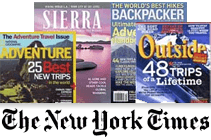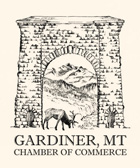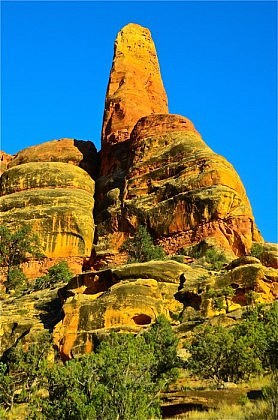As previously noted in our March 15 blog, the Greater Yellowstone Ecosystem (GYE) is one of the great remaining wildland complexes on Earth, sprawling over roughly 16 million acres — or 25,000 square miles — of northwest Wyoming, southern Montana and extreme eastern Idaho. Yellowstone National Park encompasses about 2.2 million acres in the core of the region. By the term “wildland complex”, I simply mean a cohesive geographic area that is dominated by large chunks of undeveloped wild country in close proximity to one another. Some of the wild areas are protected and some are not. Although our company is noted for our Yellowstone backpacking trips, we also run guided wilderness hiking trips elsewhere throughout much of the Greater Yellowstone Ecosystem. More on this later.
In the March 15 post, I mentioned that the Greater Yellowstone Ecosystem may be the most ecologically intact wildland complex in the temperate zones of planet Earth, still supporting populations of every vertebrate species known to have been here prior to European colonization. Of course, some species, such as Canada Lynx, are greatly reduced, but in most of the temperate world a big chunk of the native fauna has long since gone the way of the Dodo. Not here, and many of us are working to keep it that way! Which isn’t easy, because population growth is encroaching on GYE habitat, and associated pressures for mechanized recreation and resource extraction threaten the integrity of this world-renowned landscape.
Most of the GYE is a volcanic highland of mountain and plateau rising above high desert landscapes to the west, south and east, and the Montana prairie to the north. I mentioned that the public lands of the GYE include both protected and unprotected areas. Our Yellowstone backpacking trips are mostly within protected areas. Among the notable protected areas are the contiguous Bridger/Fitzpatrick/Popo Agie Wilderness areas of the famed Wind River Range; the Washakie and Teton Wildernesses (actually one unbroken area) adjacent to much of the southern and eastern Yellowstone park boundary, and the North Absaroka Wilderness just north of the Washakie. Just to the northeast of the park is the Absaroka-Beartooth Wilderness. The Gros Ventre Wilderness lies directly across the valley of Jackson Hole from the Tetons, and the Jedediah Smith Wilderness forms the west slope of the Tetons. The relatively small Winnegar Hole Wilderness is just to the north abutting Yellowstone. The Lee Metcalf Wilderness lies a bit to the west and northwest of the park.
Of course, Yellowstone itself is also somewhat protected as a national park, though not yet as designated Wilderness. And there are also a handful of semi-protected “Wilderness Study Areas” in the Greater Yellowstone Ecosystem. In addition to all of these lands, there are over 2 million acres of unprotected public land road-less areas, mostly within the Bridger-Teton, Shoshone, Targhee and Custer-Gallatin National Forests. These areas also qualify for Wilderness designation. In many ways, the long term fate of the GYE hinges upon what happens to these still wild but unprotected “roadless areas”.
In the next two installments, we will look at the natural features of the GYE and then we’ll also discuss how the various land classifications will impact the long term fate of this magical landscape that’s know as the Greater Yellowstone Ecosystem.



